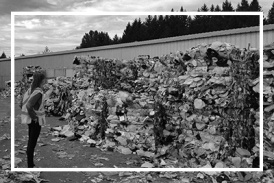West Covina High School Honored as a Leader in Multilingual Education
West Covina High School Honored as a Leader in Multilingual Education
This honor highlights West Covina High School’s outstanding efforts in promoting biliteracy and supporting English Learners on their paths to academic achievement and lifelong success.
Specifically, WCHS was recognized as one of the top high schools in Los Angeles County for awarding the California State Seal of Biliteracy to many English Learners and reclassified English-proficient students.
"We are incredibly proud of this recognition," said Dr. Emy Flores, Superintendent of West Covina Unified School District. "This honor reflects our educators' dedication and our students' determination. I applaud the WCHS team for their exceptional work fostering a learning environment where multilingualism is celebrated and nurtured. Preparing students for success in college, career, and life means recognizing and valuing the rich linguistic and cultural assets they bring."
The State Seal of Biliteracy is a distinction awarded to high school graduates with proficiency in English and one or more other languages. At West Covina High School, many students earn this recognition each year, demonstrating the school's commitment to equity, access, and excellence in education.
"We are honored to be recognized for our efforts to elevate multilingual achievement," said Dr. Charles Park, Principal of West Covina High School. "Our students work hard to develop academic language proficiency in multiple languages, and this distinction is a testament to their dedication, resilience, and the high-quality support provided by our teachers and staff. We believe every student’s voice, culture, and language matters—and we’re proud to champion that belief daily."
This award reinforces the district’s ongoing commitment to multilingual education and its strategic goal of supporting all students' thriving in an increasingly global and interconnected world.
For more information about West Covina High School and its multilingual programs, please visit www.wcusd.org.
Johanna Villarea
West Covina Unified School District
+1 626-939-4600
email us here
Legal Disclaimer:
EIN Presswire provides this news content "as is" without warranty of any kind. We do not accept any responsibility or liability for the accuracy, content, images, videos, licenses, completeness, legality, or reliability of the information contained in this article. If you have any complaints or copyright issues related to this article, kindly contact the author above.
Protection Tax Helps Clients Resolve Unfiled Returns Before IRS Action Escalates
leagend T31 Sets New Standard for Affordable and Accurate OBD II Diagnostics
Couple Opens Unique '432Hz' Live Music Sanctuary on Spain's Costa del Sol for Summer Vibes and Son Awareness
Kalendarium
Więcej ważnych informacji
 Jedynka Newserii
Jedynka Newserii

 Jedynka Newserii
Jedynka Newserii

Handel

Ze względu na różnice w cenach surowce wtórne przegrywają z pierwotnymi. To powoduje problemy branży recyklingowej
Rozporządzenie PPWR stawia ambitne cele w zakresie wykorzystania recyklatów w poszczególnych rodzajach opakowań. To będzie oznaczało wzrost popytu na materiały wtórne pochodzące z recyklingu. Obecnie problemy branży recyklingu mogą spowodować, że popyt będzie zaspokajany głównie przez import. Dziś do dobrowolnego wykorzystania recyklatów nie zachęcają przede wszystkim ceny – surowiec pierwotny można kupić taniej niż ten z recyklingu.
Przemysł spożywczy
Rośnie presja konkurencyjna na unijne rolnictwo. Bez rekompensat sytuacja rolników może się pogarszać

Rolnictwo i żywność, w tym rybołówstwo, są sektorami strategicznymi dla UE. System rolno-spożywczy, oparty na jednolitym rynku europejskim, wytwarza ponad 900 mld euro wartości dodanej. Jego konkurencyjność stoi jednak przed wieloma wyzwaniami – to przede wszystkim eksport z Ukrainy i niedługo także z krajów Mercosur, a także presja związana z oczekiwaniami konsumentów i Zielonym Ładem. Bez rekompensat rolnikom może być trudno tym wyzwaniom sprostać.
Transport
Infrastruktury ładowania elektryków przybywa w szybkim tempie. Inwestorzy jednak napotykają szereg barier

Liczba punktów ładowania samochodów elektrycznych wynosi dziś ok. 10 tys., a tempo wzrostu wynosi ok. 50 proc. r/r. Dynamika ta przez wiele miesięcy była wyższa niż wyniki samego rynku samochodów elektrycznych, na które w poprzednim roku wpływało zawieszenie rządowych dopłat do zakupu elektryka. Pierwszy kwartał br. zamknął się 22-proc. wzrostem liczby rejestracji w ujęciu rocznym, ale kwiecień przyniósł już wyraźne odbicie – o 100 proc.
Partner serwisu
Szkolenia

Akademia Newserii
Akademia Newserii to projekt, w ramach którego najlepsi polscy dziennikarze biznesowi, giełdowi oraz lifestylowi, a także szkoleniowcy z wieloletnim doświadczeniem dzielą się swoją wiedzą nt. pracy z mediami.









.gif)

 |
| |
| |
|